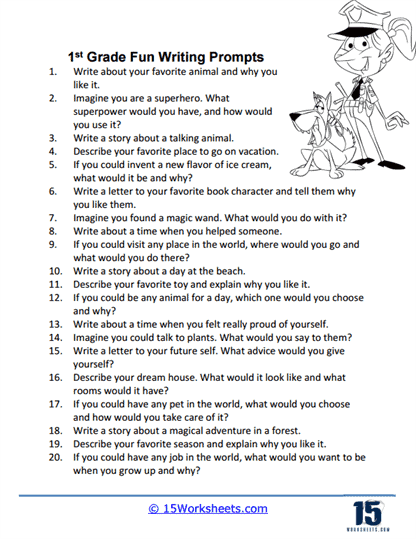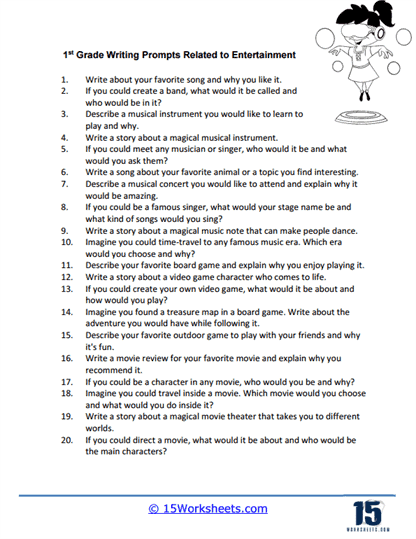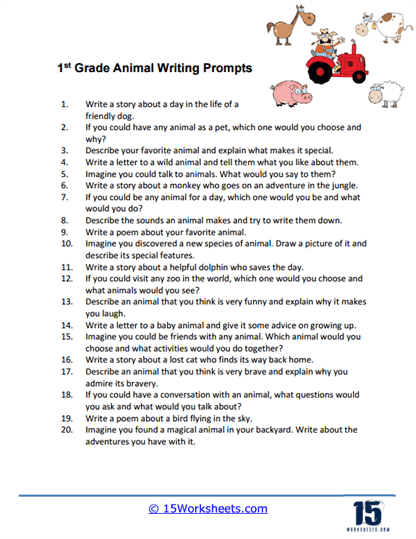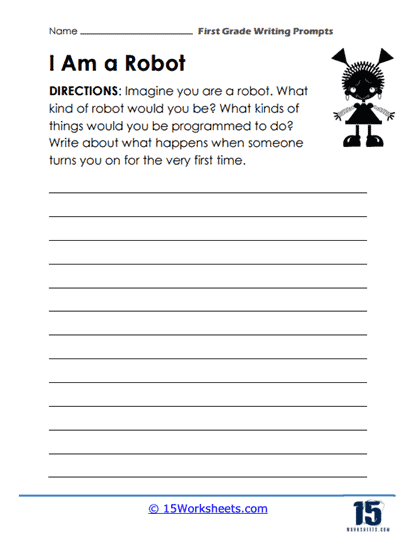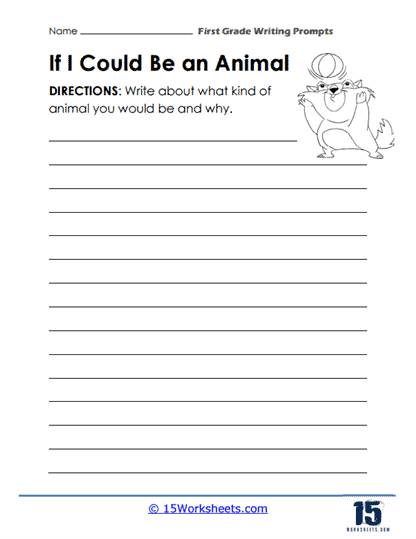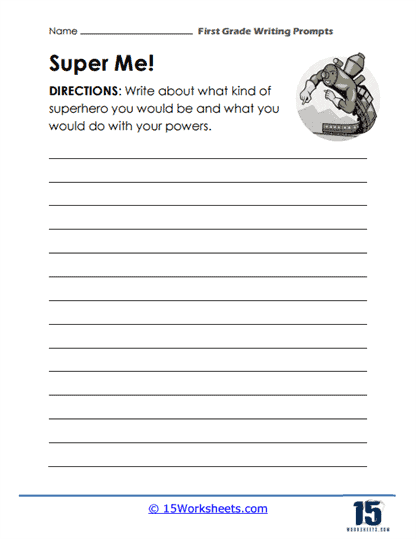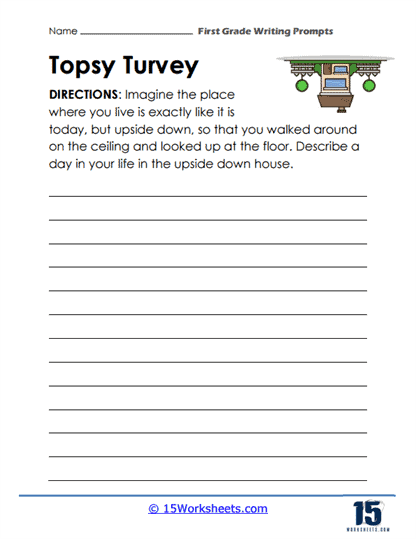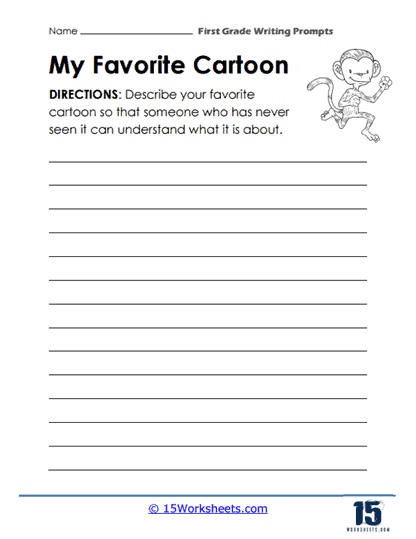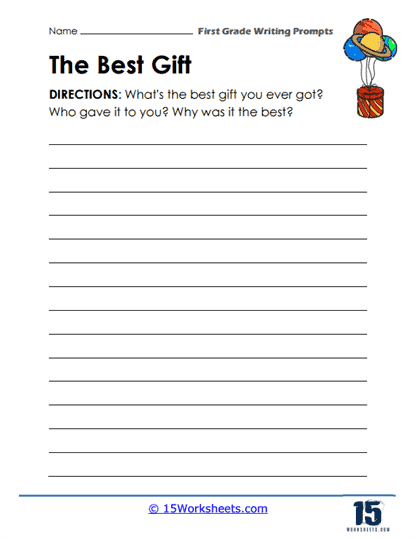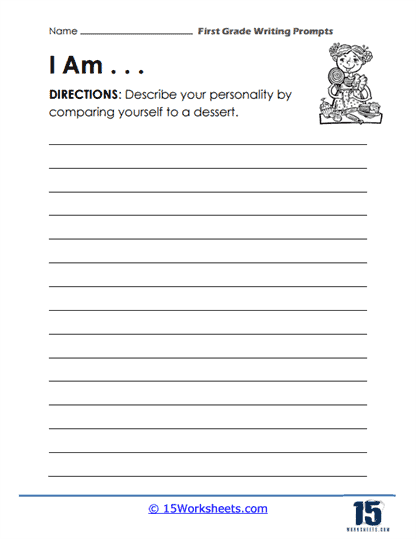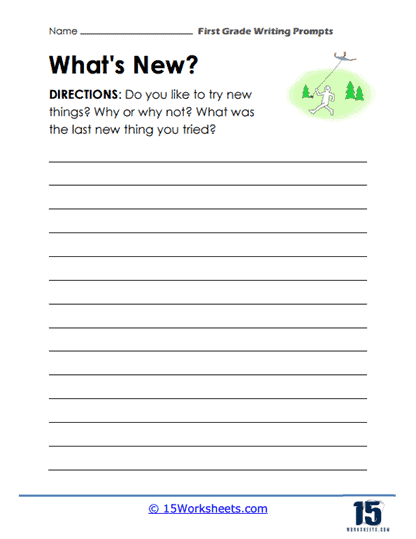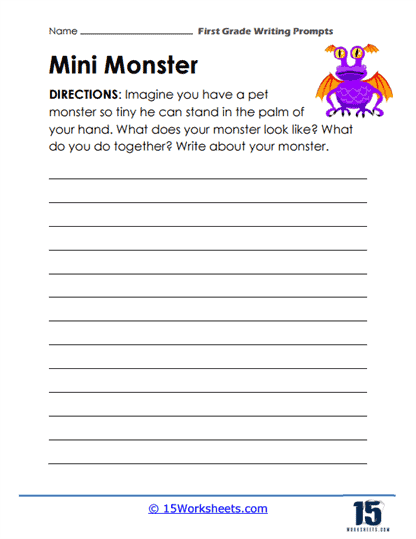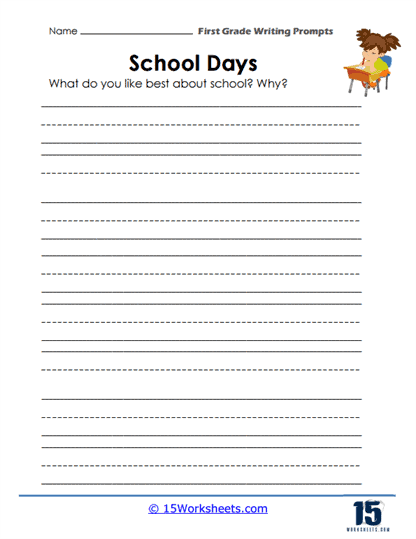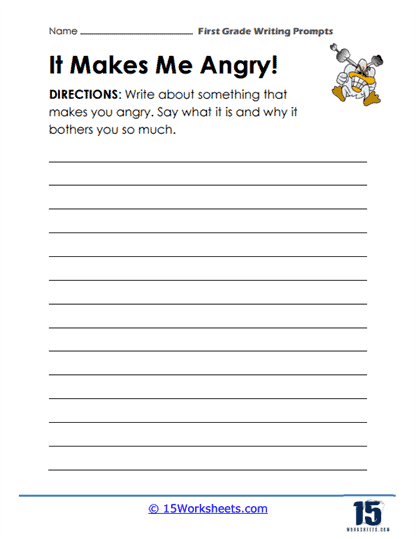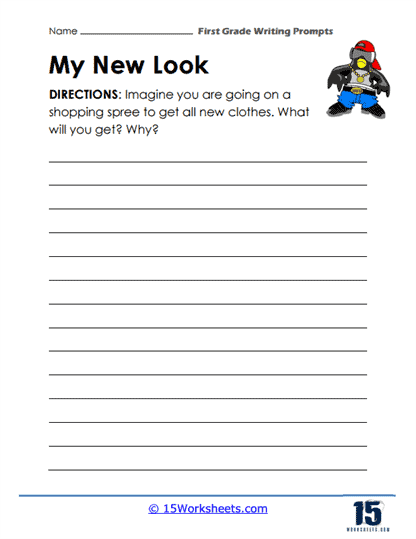1st Grade Worksheets
All About These 15 Worksheets
These word prompts are provided to help you understand language better. They are leveled specially for 1st grade students. By seeing and using different words, you will become better at understanding what you read and hear. This understanding is important for communicating and making sense of the world around you.
The goal is to help create a comfortable and encouraging space for 1st graders when writing. The top three worksheets feature sets of 20 prompts to encourage students to explore and find their own voice. The remaining sheets are one-off writing assignments that are presented in a fun and engaging way. There is plenty of space to write. We would recommend using a pencil that is comfy and easy to write with.
A good way to use these sheets with your class is to print out all 15 and pass them about the class. Students should be provided with approximately 25 minutes to complete each sheet.
5 minutes of planning time. The goal is to determine your main idea.
5 minutes to create an outline.
10 minutes of writing time.
5 minutes to revise and proofread the work.
What Writing Skills Do Students Learn in 1st Grade?
First grade is an essential time for students to build foundational writing skills. Though the exact curriculum may vary based on regional education standards, students in 1st grade generally learn the following writing skills:
Understanding Basic Sentence Structure – In English, a basic sentence generally consists of two main components – the subject and the predicate. They learn to create complete sentences with a subject and a predicate.
Spelling and Phonetics – Students start to spell words more accurately by applying their knowledge of phonetics. Phonetics is the branch of linguistics that deals with the study of speech sounds. It focuses on the physical properties, production, perception, and classification of sounds in human language. Phonetics examines the sounds themselves, independent of their meaning or function in language. They are encouraged to use phonetic spelling for unfamiliar words.
Grammar – Grammar refers to the set of rules and principles that govern the structure, formation, and usage of language. It encompasses the various elements and components of a language, such as words, phrases, clauses, and sentences, and their relationships to convey meaning effectively. They are introduced to basic grammar concepts such as the use of nouns, verbs, and adjectives. They learn to form singular and plural nouns, and they understand the basic rules for verb tenses.
Capitalization and Punctuation – They learn when to use a capital letter (for example, at the start of a sentence or for a proper noun) and the appropriate use of punctuation marks like periods, question marks, and exclamation points.
Handwriting – Students work on their handwriting skills, moving from print to potentially beginning to learn cursive. They work on forming letters properly and neatly.
Writing Coherent Thoughts – Students are encouraged to express their thoughts and ideas in writing. They learn to write brief narratives about single events or experiences with a clear sequence of events and some descriptive details.
Vocabulary Expansion – They learn to use a wider range of words in their writing, including more descriptive words.
Sequencing and Organization – In story writing or describing events, students are taught to sequence their thoughts and ideas logically.
Revision and Editing – They learn the basics of revising their work, including proofreading for spelling mistakes, and begin to understand that writing can be improved.

